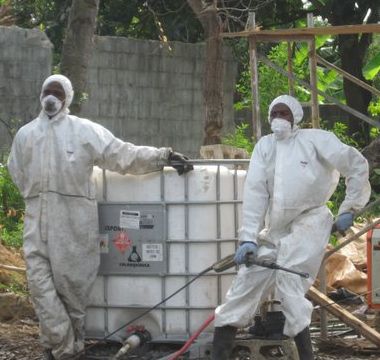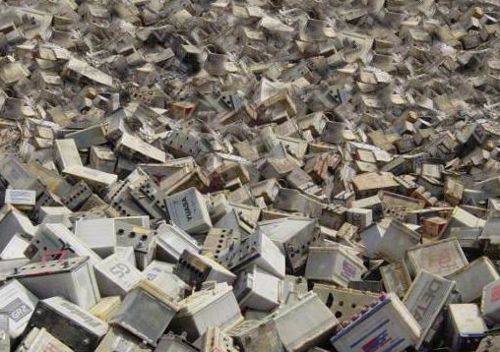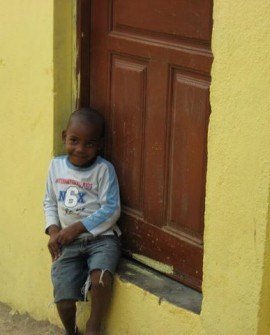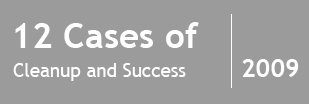Removing Lead Waste
Bajos De Haina, Dominican Republic
| Location | Bajos De Haina, Dominican Republic |
|---|---|
| Pollutant | Lead |
| Cause | Improper recycling of used lead acid (car) batteries |
| Health Impact | Lead furnace slag has contaminated Haina’s soil, water and food supplies leaving the population of Haina with one of the highest levels of lead poisoning in the world. Health effects of lead poisoning include neurological damage, reduced I.Q., anemia, nerve disorders, loss of memory and concentration, infertility, increased blood pressure and chronic headaches and weakness [1]. Effects are particularly severe on children. |
| Output | IA coalition including government, academics and NGOs came together to design and fund a cleanup project—the first of its kind in the country. |
| Outcome | Average blood lead levels among patients decreased significantly from 71 to 28 μg/dL The cleaned up site is slated to become a public park. |
| Implications | Improper treatment and disposal of chemicals lead to irreversible environmental and health impacts. International communities must pay attention to the full life-cycle of these toxic materials. |
| Remaining Challenges | Infortunately, neurodevelopment damages that have occurred among the community’s children in Haina may be permanent. Therefore, a significant amount of social support is needed to help impoverished families deal with these life-long disabilities. |
Context
Bajos De Haina is commonly referred to as the ‘Dominican Chernobyl’ due to its chemical pollution levels. A community near an abandoned lead smelter, over 90 percent of Haina’s residents were found to have elevated blood lead levels. In 2000, the Dominican Secretary of Environment and Natural Resources identified Haina as a national hotspot of significant concern. According to the United Nations, the population of Haina is reported to have the highest level of lead contamination in the world.
Site Details
Paraiso de Dios is a community located in the municipality of Haina, 7 kilometers due west of the capital, Santo Domingo and just west of the bridge crossing the Haina River. The former MetaloXsa (Metales y Oxido, S.A.) Lead-acid Battery Recycling facility occupies approximately 45 hectares on a site located on the top of a hill with a view of the Rio Haina; which is about 300 meters to the south, and drains directly into the Bay of Haina another 0.7 km downstream. Three sides of the site are bordered by homes with dirt floors. Across the street is a large vacant parcel of land with barbed wire restricting access. The site is flat with no intact buildings, roads or facilities. There are a few smaller dilapidated building shells and the remnants of a concrete rotary kiln support. Paraiso de Dios is very hilly and rainwater runoff from this site travels east and south through a highly populated residential neighborhood to the Haina River and then drains into the Bay of Haina. Lead levels in soils throughout the community exceeded U.S. EPA limits for lead by over 10,000 times -some reaching 60 percent lead content.
Health Impact
The health effects of lead poisoning are both acute and chronic and are particularly severe on children.
These effects include: neurological damage, reduced IQ, anemia, nerve disorders, muscle and joint pain, loss of memory and concentration, infertility, increased blood pressure and chronic headaches and weakness.1 Even small amounts of lead in children’s bodies are associated with long-lasting neurological and cognitive impairments. At high concentrations lead poisoning can cause death. Further testing by Blacksmith Institute staff continued to show elevated blood lead levels in the community despite the end of smelting activities at the plant:
| Date | # Patients | Average BLL Concentration |
|---|---|---|
| March 1997 | 116 | 71 μg/dl |
| August 1997 | 146 | 62 μg/dl |
| March 2007 | 31 | 31 μg/dl |
| March 2009 | 83 | 28 μg/dl |
With these high levels of lead in the community, action needed to be taken to remove the contaminated material and educate the community on the health risks of lead.
World Health Organization limits are 10 μg/dl for lead in blood although current epidemiological evidence suggests there is no safe level of exposure to lead. According to most international standards, lead levels above 70 μg/dL in children are considered medical emergencies. Levels upwards of 100 μg/dl have been documented in children living adjacent to lead smelting facilities in the Dominican Republic as well as in other places around the world including Senegal and the Philippines.
Exposure Pathways
The defunct recycling facility’s lead slag continued to contaminate Haina’s soil, water, and food supplies. Empty battery casings, large piles of excavated lead slag, and other debris litter the facility. Pollution enters human bodies in the following ways:
- Inhaling dust: During dry months, soil causes airborne dust pollution that affects a large area. Automobile usage, construction activities, and other
everyday activities further generate airborne dust, which enters the respiratory system as well as the bloodstream. - Absorbing dust through skin or mouth: Soil easily generates dust that is ingested through normal childhood hand-to-mouth activity. In addition, barefoot children pick up dust-covered objects and bring them to their homes. Dust containing lead can build up on bedding, clothing, and cooking utensils.
- Drinking contaminated water: In time, lead can migrate and contaminate subsurface and surface water supplies. Airborne dust can also migrate and enter water supplies.
- Eating contaminated food: Contaminated soil generates dust that accumulates on locally grown fruits and vegetables. Dust can enter homes and settle on food items inside.
- Playing on slag: Children handling the abundant large and small “rocks” in the area can get lead oxide on their hands. This substance enters the body through direct ingestion or contaminated foodstuffs.
Intervention
Terragraphics Environmental Engineering, in partnership with Blacksmith Institute, designed an intervention for the site with an approximate timeline of two years.
In 2007, Blacksmith Institute led the formation of a stakeholder group, meeting with possible funders and conducting community outreach and education programs. The stakeholder group consisted of The Ministry of the Environment and Natural Resources, the Autonomous University of Santo Domingo, MetaloXsa, and the community, among others. The group met regularly to discuss project progress and build consensus on appropriate intervention and remediation activities. In the first year, Blacksmith Institute consistently held community education days to encourage community members to adopt appropriate safeguards to mitigate their lead exposure. Ongoing blood testing was also conducted.
Excavation of the site occurred from December 2008 through February 2009. Over 6000 cubic meters of principal threat materials were removed from the community and transported to an industrial site for storage in an environmentally sound, monitored pit for processing at a later date. In conjunction with the Ministry of Environment, local crews and contractors were hired and trained, building capacity within the Dominican Republic to perform a hazardous waste removal operation - the first of its kind for the country. In addition to removing waste from the formal industrial site, community walkways and backyards were also excavated and backfilled with clean sand and soil. The main pit, where a majority of the waste was stored, will become a park in late 2009. Blacksmith Institute will continue to monitor the blood lead levels of the children in the community.
Implementing Organizations
Ministry of Environment in the Dominican Republic, Blacksmith Institute, the Inter-American Development Bank, University of Santo Domingo, TerraGraphics Environmental Engineering, Inc., Hunter College, City University of New York.
Used Lead Acid Batteries Are a Global Pollutant
Recycled lead is a valuable commodity for many people in the developing world, making the
recovery of car batteries (known as used lead-acid batteries or ULAB) a viable and profitable
business. However, in many developing countries and some in rapid transition, recycling of car
batteries is done improperly and informally. Batteries are often broken open by hand, and the
battery acid poured into the soil where it contaminates the groundwater and surrounding area.
Weather-exposed broken batteries and casings are left to emit lead dust. Smelting operations
are usually conducted in the open air, in densely populated urban areas, and often with few (if any) pollution controls. As a result, lead contaminated compounds are released into the local environment in critical quantities.
Improper recycling of used car batteries occurs in every city in the developing world as part of a complicated cycle where batteries are sold by major firms internationally, recovered in smallscale local operations, and often recycled back to the large manufacturers.
As urban centers in developing countries become more populated, the confluence of increased
car ownership and high unemployment rates has led to a pandemic of informal used car battery collection and melting operations. In many cases, informal battery melting is a subsistence activity - done in homes and common areas. The lack of awareness of the dangers of lead combined with a lack of viable economic alternatives has led to the systemic poisoning of communities throughout the world.
In communities such as Haina where brain damage has already occurred among children, that
disability is permanent and requires intensive social support for the families of those children.
References
J. Caravanos, R. Fuller. Polluted Places--Initial Site Assessment. Blacksmith Institute. (2006) February 22.
→ http://www.blacksmithinstitute.org/docs/haina1.doc
B. Kaul, R.S. Sandhu, C Depratt, D Reyes. Follow-up screening of lead-poisoned children near an auto battery recycling plant, Haina, Dominican Republic. Environmental Health Perspective. (1999). 107 (11)
Industrial Waste Minimization in the low Haina River Basin
→ http://IWCAM/2nd%20Steering%20Cmttee%20Meeting/Dominican%20Republic%20Demo%20Submission%20040130.doc.
Additional Photos
 |
Local contractors in the Dominican Republic were hired and trained to manage hazardous materials cleanup |
 |
|
Footnotes
[1] World’s Worst Polluted Places Report 2008. Blacksmith Institute.

-
Phasing Out Leaded Gasoline
-
Ending Chemical Weapons
-
Improving Indoor Air - Ghana
-
Preventing Mining Pollution - Chile
-
Lowering Radioactivity - Chernobyl
-
Cleaning Urban Air - India
-
Removing Lead - Dom. Republic
-
Recapturing Mercury - Indonesia
-
Reducing Lead - Russia
-
Removing DDT - Tanzania
-
Restoring a Waterway - China
-
Removing Arsenic - India



